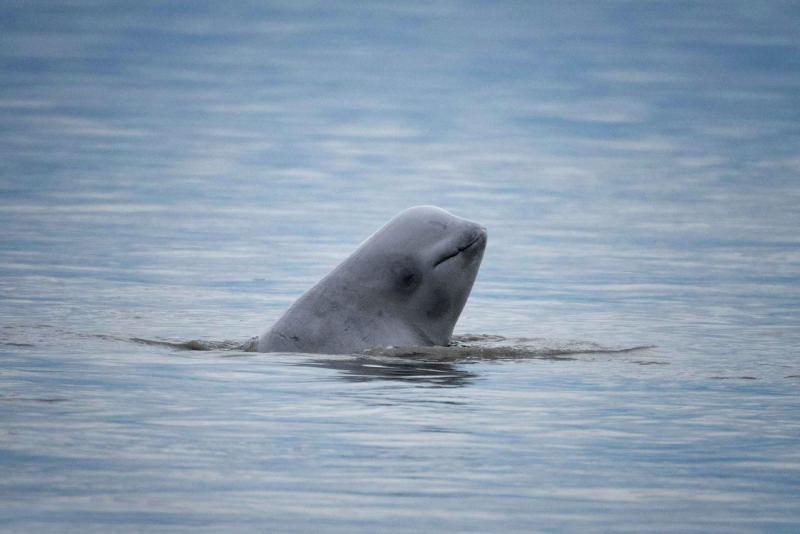Today, NOAA Fisheries released its biennial abundance estimate for endangered Cook Inlet beluga whales. Scientists estimated that the population size is between 250 and 317, with a median estimate of 279. The population is estimated to be smaller and declining more quickly than previously thought.
Abundance estimates can vary from year to year due to a number of factors. These include births and deaths, changes in beluga behavior or distribution, and statistical variability in the data. However, over the most recent 10-year time period (2008–2018), the estimated trend in abundance is approximately -2.3 percent/year (estimated range between -4.1 percent to -0.6 percent), which is declining faster than the previous estimate of -0.5 percent/year (estimated range between -2.5 percent and +1.5 percent).
When the last population estimate was released in 2016, using the best methodology at the time, the population was estimated to be around 328 animals. Today, using the new, more reliable methodology, scientists estimate that abundance in 2016 was more likely around 293 animals. We used this same methodology to examine data collected in 2018. The population appears to be continuing to decline and is now estimated to be around 279 animals.
“These new abundance and trend numbers are concerning,” said Jim Balsiger, Alaska Regional Administrator for NOAA Fisheries. “They indicate that we still have a long way to go to recover this iconic and highly endangered population.”
The new abundance and trend estimates were developed by incorporating additional data and an improved methodology for analyzing the results of aerial population surveys. Agency experts devised a new group size estimation method and new criteria to determine whether certain data from aerial surveys could be used reliably. In the new report, abundance estimates dating back to 2004 have been adjusted using the new methodology.
“We continually look for ways to improve our assessments of marine mammal stocks using the best available scientific information and techniques. We’re confident that this new methodology provides a more accurate picture of the status of Cook Inlet belugas than the previous approach,” said Robert Foy, Alaska Fisheries Science Center Director.
NOAA Fisheries has been conducting aerial surveys of Cook Inlet beluga whales for more than two decades to estimate the population’s abundance. From a small airplane, scientists look for and count groups of beluga whales and make video recordings of the whale groups. They then analyze the video and observer counts to produce a broad-scale picture of the whales’ distribution and abundance in the inlet in early June.
The Cook Inlet stock is one of five beluga populations recognized within U.S. waters. NOAA listed Cook Inlet beluga whales as endangered under the Endangered Species Act in 2008. The agency finalized a recovery plan for the Distinct Population Segment in December 2016.
Cook Inlet beluga whales are one of NOAA Fisheries' Species in the Spotlight—an initiative that includes animals considered most at risk for extinction and prioritizes efforts for their recovery. The next population abundance survey for Cook Inlet beluga whales is scheduled for June 2020.





